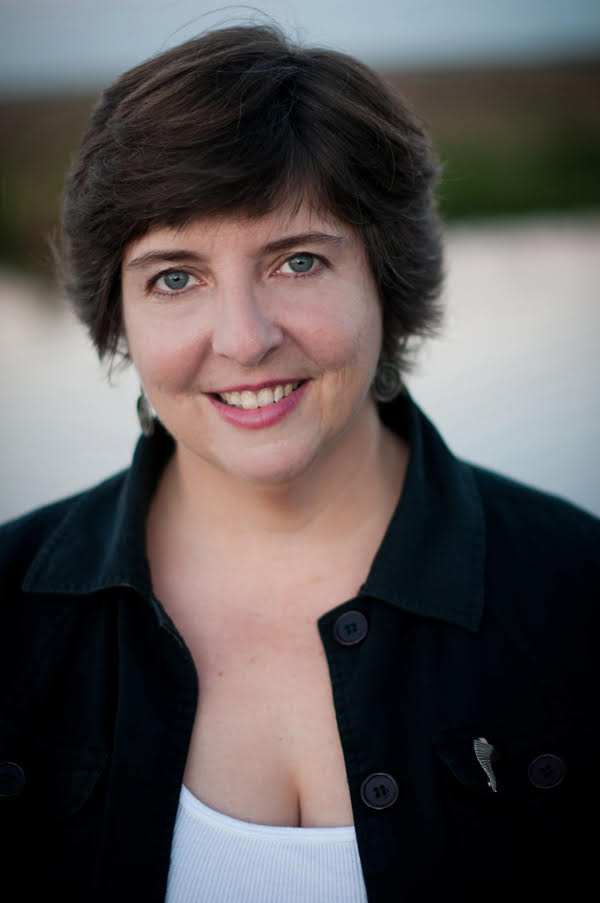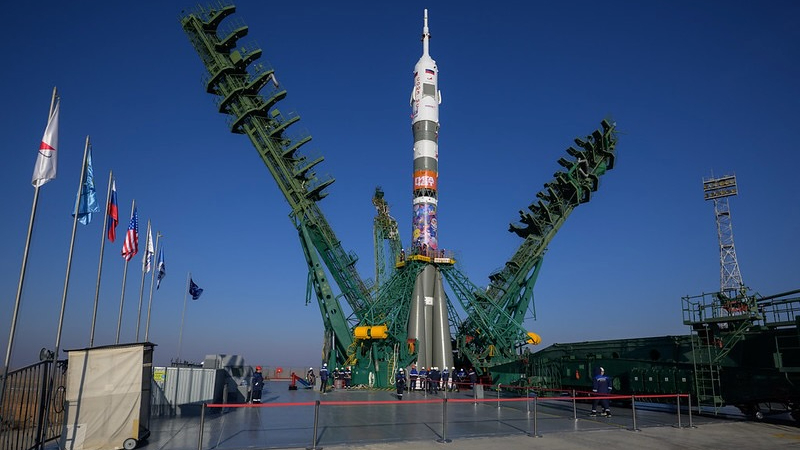Florida Today: 2004 Hurricanes Caused Frustration

This story is Chapter 7in an 11-part series by Florida Today.
CAPE CANAVERAL - Stephanie Stilson felt her team'senergy jump as workers saw Discovery starting to come together.
All but dismantled during ayears-long maintenance and modification period, it was starting to look like aspace shuttle again. The team was almost ready for the historic return toflight.
It finally seemed the worstof the delays since the Columbia accident were behind them.
"We were on thatupswing," she said. "People were thinking, 'OK, we're over the hump.'"
Then came the hurricanes.Three times in two months, workers had to stop getting ready for return toflight and start preparing for the worst. They took a shift to close theorbiter's payload bay doors. They closed the side doors and hatches. If theycouldn't be closed, workers bagged them, taped the plastic up, and did whateverelse they could think of to keep water out. Crews bagged the wheels andsandbagged the doors, just in case the storm pushed a surge -- or giant wave --of water over the center.
All the while, workers weredistracted. They needed to hammer up plywood or screw on shutters. They worriedabout their families, their homes, their trees, everything as constant TVreports advertised a seemingly imminent doomsday.
Breaking space news, the latest updates on rocket launches, skywatching events and more!
Three times, KSC DirectorJim Kennedy closed the place down and sent people home to deal with theirlives.
Hurricane Charley grazedthe space
center first, after steamrolling across the state from west to east in August,initiating Florida's fiercest storm season on record.
The worst, for Florida's East Coast, was to come. Frances and Jeanne aimed right at Brevard.
Kennedy Space Center stood directly in Frances' path as a stubborn high pressure ridge pushed the violent hurricane westward across the Atlantic Ocean.
It was beginning to looklike a Category 4 storm, a monster capable of utter devastation.
Like most others, Stilsonevacuated. She went to Fort Myers. Armando Oliu, a KSC colleague working onreturn to flight, sent his wife, Jennifer, and daughter, Victoria, off to visitfriends in Tennessee.
A member of the team ofworkers who would be first back on the center to assess the storm's damage,Oliu couldn't go far. He opted for Sarasota, far enough to avoid Frances, but close enough to get back.
KENNEDY SPACE CENTERFrances hammers KSC, leaves shuttles unharmed
Frances came ashore farther south thanexpected, at Hutchinson Island, but it stretched its spiraling arms hundreds ofmiles. It ripped holes in people's roofs, chewed at the beaches and lashedeastern Florida with high winds and tornadoes.
The outer walls of thegargantuan Vehicle Assembly Building at KSC, where space shuttle orbiters arestacked with solid rocket boosters and the fuel tank before launch, began tocome apart.
Over the years, steelfasteners interacted with aluminum wall panels, the rain and salty air,creating miniature batteries.
The resulting corrosion ateaway at the holes. Gusts up to 94 mph had no problem popping off the big metalpanels. They twisted as they flew through the air, taking out cars on theground and smashing into nearby buildings.
No one was there to see it.
Frances looked so dangerousas it approached that the KSC ride-out team decided not to live up to its name.Fearful of deadly storm surge, the crew hid out not at the Launch Control Center, but at locations across the county and beyond.
"It was an uneasyfeeling locking the gate and leaving, because we had never done thatbefore," said NASA's Michael Stevens, who acted as emergency preparednessofficer during the storm while his wife and two children evacuated to Georgia.
A direct hit by a Category4 storm could destroy the buildings that house the orbiters. The space centershut down by Sept. 3.
Although winds at KSC neverreached sustained hurricane strength, the slow clobbering by Category 2 Franceswas enough.
Stevens waited out thestorm at Brevard County's Emergency Operations Center in Rockledge. As thepainstakingly slow-moving Frances battered most of the county, Stevens couldonly wonder if there would be any shuttles, launch pads or even a space programto go back to.
When the weather settled,Stevens joined a caravan of about 50 people and drove out to the space center.
From miles away, thepicture looked grim. They could see gaping holes in the fa?ade of the VAB, someopened all the way through the walls. But none of the flight hardware insidewas ruined.
A computer control centerwas damaged and the building where workers make heat-shield tiles and blanketslost its roof. In the tile facility, workers looked up and saw the sky. Stevensthought they were lucky.
The factory's destructionwould mean more delays, but there was still a space program. Snug in theirhangars, Discovery, Endeavour and Atlantis survived undamaged. "You feltlike you had a shot at getting back to the launching business," he said.
LAUNCH COMPLEX 39 Stormscause damage, weeks of delays
Around the space center, Frances left scars. A pile of twisted metal from the VAB's walls, which lost more than50,000 square feet in panels, lay in a nearby parking lot.
Pieces of faded redrecalled the enormous flag mural of which they had once been part. Inside,things weren't so bad. The roof leaked, but most things appeared in decentshape.
The worst was the tilefactory. Upstairs, where the staff once sewed thermal blankets for the orbiter,insulation hung over scattered pieces of high-tech fabric. Ancient sewingmachines seized from rain and salt air.
"I always wanted toget skylights in here," said Martin Wilson, who works for shuttlecontractor United Space Alliance as the head of the thermal-protectionoperation. "At least we know what it would look like."
The mess made Kathy Evanswant to cry. Instead, she and her colleagues dug into the debris and pulled outwhatever pieces might save them -- paperwork, patterns, fabric, tools, buttons.
Before Hurricane Jeannewould hit, the blanket operation moved to a hangar next to the shuttle landingstrip. Technicians fixed the sewing machines. Workers matched identifyingpaperwork with the unique cloth pieces that tuck into crevices of the orbiters.The thermal protection team lost three weeks of work, but the technicians werestill sewing.
The tile-production factorywas stripped of wet walls and dried out with hot-air blowers. Workers lost 10days, but avoided sending work to California. Wilson greeted the prospects ofthe next storm, Jeanne, cheerfully.
"We've been kind ofpre-disastered up to the 90-mile-an-hour level," he said. "Any windsless than that aren't going to do anything."
COCOA Hardened workersready for Jeanne, not delays
Stilson came back after Frances to find a tree had ripped out power lines and equipment on the side of her house in west Cocoa. By the time Jeanne approached a few weeks later, she and the KSC crew were oldhands at getting ready -- at work and home.
Stilson hired a contractorto pre-cut some trees in her yard this time. She was inside her house when sheheard a crash. "Oh, no," she thought. "Do I even want to golook?"
A tree had fallen the wrongway, onto her garage. The damage wasn't too bad. She and her roommate had thehouse patched up, and Stilson went to St. Petersburg for her sister'sengagement party during the storm.
The Olius did what a lot ofevacuation-weary Brevardians tried for Jeanne. They stuck it out at home inRockledge.
"I probably wouldn'tdo that again," he said. "I was too worried about the house."
If something had happenedto the house, his wife and daughter would have been his priority anyway, notthe house or belongings.
As the wind howled, hethought, "What am I doing here, anyway? I'm not going out there andplywood the house and get hurt, and then what will they do?"
At KSC, EmergencyPreparedness Officer Wayne Kee and the ride-out crew endured Jeanne in the Launch Control Center. There, NASA and Air Force officials, security workers and weatherforecasters eyeballed cameras monitoring the storm's glancing blow on the Cape.
"Until it got darkdark, you could see things like pieces of metal flying off the VAB, just allkind of things flowing, blowing and rolling," Kee said.
Fortunately, Frances hadn'tleft a lot for Jeanne to blow away.
Powerless again at home,Stilson borrowed a generator to keep her two big fish tanks working.
Then she had to face thereality at work. There was damage, but nothing more devastating than Frances.The real impact: missed work days. They'd lost too much work time to the freakweather -- four to five weeks.
There was no way to getDiscovery ready to roll when planned. "Same type of thing could happen ifwe had a hardware delivery slip," she said. "You just go in and yousay, 'Now, what do I do to recover from that?' "
Kennedy workers are used tomaking up lost time. It's not unusual for them to turn half-finished piecesinto flight-worthy hardware, making last-minute changes along the way.
"When you're where therubber meets the road, you get all those final challenges that everyone elsehas been putting off," she said. Still, people were discouraged.Discovery's launch slipped from March to May.
"I want to getflying," Stilson said. "If I could fly tomorrow, then I'd be happy todo that. But they also know and understand that it has to be done the rightway."
Publishedunder license from FLORIDATODAY. Copyright ? 2005 FLORIDA TODAY. No portion of this materialmay be reproduced in any way without the written consent of FLORIDA TODAY.
FloridaToday Special Report: NASA's Return to Shuttle Flight
Fixing NASA: Complete Coverage ofSpace Shuttle Return to Flight

Chris Kridler is a writer, editor, photographer and storm chaser who authored a group of storm-chasing adventure novels called Storm Seekers. As a reporter covering space, her subjects have included space shuttle missions, the Mars Rovers from California’s Jet Propulsion Lab, and a Soyuz launch and mission from Kazakhstan and Russia. Much of that work was published through her longtime column at Florida Today. Her photographs have been featured in magazines and books, including the covers of The Journal of Meteorology, the book Winderful, and the Wallace and Hobbs Atmospheric Science textbook. She has also been featured in Popular Photography. Kridler started chasing tornadoes in 1997, and continues the adventure every spring in Tornado Alley.
